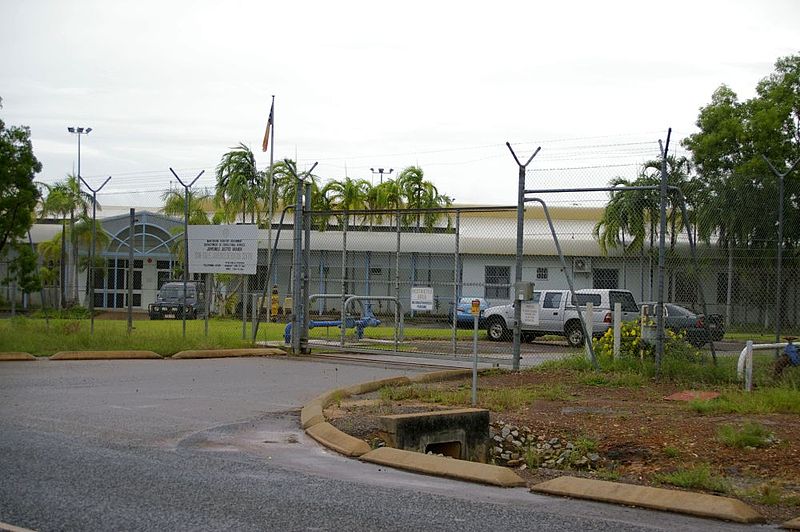In A&E’s infamous show, Beyond Scared Straight, “at-risk” kids with major behavioral problems are thrust into adult prisons for a day to literally scare them into never wanting to see the inside of a jail cell again. Once at the prisons, they are spat on, temporarily enclosed in holding cells and given the rundown of prison life. And these one-day interventions are just the beginning. The juvenile justice system that serves these kids — often unfairly — is a disturbing, glaring mirror of the already unkind world of the American justice system. It shouldn’t be this way. The juvenile justice system needs a serious reform, and the biggest change must be preventative. It needs to take place in the communities the system caters to the most — poor, impoverished neighborhoods where the youth are susceptible to crime.
On any given day, the Campaign for Youth Justice reports that there are 70,000 juvenile offenders in detention facilities, correctional facilities, group homes or shelters across the nation. Only one out of every four confined adolescent in 2010 committed a violent crime, according to The Annie E. Casey Foundation. Although primarily established to steer kids away from the criminal courts and give them more rehabilitative assistance, the juvenile justice system is failing our kids.
They are inhumane, ineffective and expensive. Rather than funneling money into a system that continues to fail its participants, the government must turn these facilities and their surrounding communities into the rehabilitative environments they are meant to be.
According to the American Civil Liberties Union, various youth offenders can end up in youth solitary confinement. In these small cell-like rooms, they spend more than 22 hours in solitary with nothing but a book or Bible, and if lucky, study materials. In a report authored by criminal justice researcher Barry Holman and Justice Policy Institute Executive Director Jason Ziedenberg for the Justice Policy Institute, a reported minimum of one-third of detention centers are overcrowded, ultimately “breeding an environment of violence and chaos.” Instead of getting better, the behavioral problems of the young offenders get worse. And to top it off, the Justice Policy Institute adds that some researchers have found that incarcerated youth have double to four times the suicide rate of non-incarcerated youths in their communities.
Not only is it inhumane, but the juvenile justice system is inherently ineffective. For instance, it fuels racism in communities. According to The Annie E. Casey Foundation, black youth are nearly five times as likely to be confined than their white peers, and Latino and Native American youth are between two and three times more likely than whites. In essence, youth of color are treated more punitively than their white counterparts.
In addition, the juvenile justice system has a bad rap for keeping juveniles out after they have left prison. Holman and Ziedenberg further explain that detained youth are more likely than non-detained youth to end up going ‘deeper’ into the system. Mass incarceration just doesn’t make sense. When juvenile arrests plummeted in the mid 1990s, the use of detention still rose.
Coupled with being ineffective, the youth incarceration system is very expensive. The Justice Policy reported in 2009 that an average of about $240 were spent on one youth offender per day. In Maryland, it was $229 per day and about $120,298 total per day when considering everybody in the system. Rather than funneling so much money on a system that doesn’t work, we should be putting our money into programs that do.
To begin in the actual prisons themselves, juvenile centers must be modeled after the “Missouri Model” — Missouri’s approach at youth incarceration. The facilities themselves are smaller and closer to the youths’ homes, emphasize small groups and individualized attention, uphold supportive peer and staff support, promote academic and pre-vocational skills and encourage family support. Not to mention, they only lock up those who pose a dangerous threat to society, rather than incarcerate those who pose minimal harm.
Outside of these prisons, state governments must emphasize preventative measures — programs that will keep juveniles out in the first place. Campaign for Youth Justice, an organization that aims toward youth justice reform, emphasizes community-based initiatives. One of their propositions includes evening reporting centers that offer young people help with school and give them community service opportunities. In addition, they propose Multisystemic Therapy, an effective alternative that can decrease recidivism by 70 percent, as it provides an active therapist in the youth’s life adding to his or her support network. As opposed to the more than $200 spent per day on one offender, these programs can cost as little as $75 per day.
The juvenile justice system, at first glance, doesn’t seem like it’s of utmost importance in the face of our nation’s many problems. But because it is a grave issue that involves the lives of America’s future workers and leaders, it must undergo serious reform. As individuals, we can volunteer at these programs, lobby or write letters to state politicians or simply give voices to the kids who are trapped in this ineffective system. Youth incarceration should be focused on second chances and rehabilitation because its offenders are children. These children must be able to have the supportive and productive childhoods they deserve.
Maris Medina is a freshman journalism major. She can be reached at marismedina29@gmail.com.



